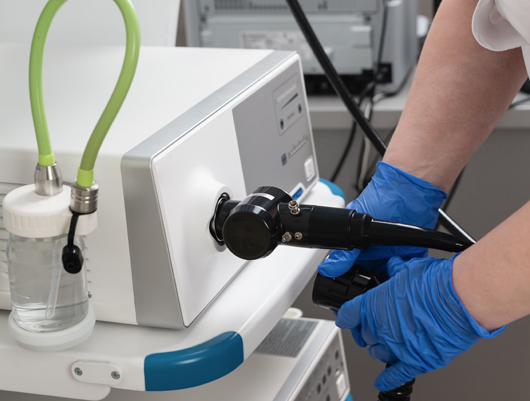Out Patient Consultation
Mon,Wed,Thu 9.30 AM to 8.30 PM
Tue and Fri 9.30 AM 6.30 PM
Sunday off
Lots of people are intimately familiar with acid reflux symptoms. Acid reflux disease, also known as gastroesophageal reflux disease (GERD), can produce a variety of symptoms.
Acid reflux symptoms most often occur:
People who have frequent acid reflux symptoms most often experience them at night. Nighttime GERD also produces the most pain. However, the level of pain does not always indicate the degree of damage to your esophagus.
More than half of all pregnant women experience heartburn during pregnancy. Increased hormones and pressure from a growing fetus can combine to produce this acid reflux symptom. In most cases, heartburn improves or completely goes away after delivery.
Heartburn is an irritation of the esophagus the tube that connects your throat and stomach. It's caused by stomach acid. This leads to a burning discomfort in your upper belly or below your breastbone.
It can vary. For some people, it can last just a few minutes. Sometimes it can last for several hours.
Heartburn happens about once a week for up to 20% of people and is common in pregnant women.
Constipation is a condition in which a person has uncomfortable or infrequent bowel movements. Generally, a person is considered to be constipated when bowel movements result in passage of small amounts of hard, dry stool, usually fewer than three times a week.
Colitis occurs when your large intestine is inflamed. It can cause pain and other symptoms. Different types of colitis require different treatments.
Ulcerative colitis is an inflammatory bowel disease (IBD) that causes inflammation and ulcers in your digestive tract. Ulcerative colitis affects the innermost lining of your large intestine, also called the colon, and rectum. In most people, symptoms usually develop over time, rather than suddenly.
Intestinal gas, a buildup of air in the digestive tract, is usually not noticed until you burp or pass it rectally (flatulence). The entire digestive tract, from the stomach to the rectum, contains intestinal gas as the natural result of swallowing and digestion.
Everyone passes gas several times daily, and occasional burping or belching is normal. However, excessive intestinal gas sometimes indicates a digestive disorder.
Gallstones are pieces of solid material that form in your gallbladder, a small organ under your liver. Your gallbladder stores and releases bile, a fluid made in your liver, to help in digestion. Bile also carries wastes like cholesterol and bilirubin, which your body makes when it breaks down red blood cells. These things can form gallstones.
Gallstones can range in size from a grain of sand to a golf ball. You might not know that you have them until they block a bile duct, causing pain that needs treatment right away.
Signs of a serious infection or inflammation:
Crohn’s disease is a lifelong inflammatory bowel disease (IBD) which causes inflammation in part of your digestive system. Crohn's can affect any part of it, but it most often involves your small intestine and colon.
Pancreatitis is inflammation of the pancreas. The pancreas is a long, flat gland that sits tucked behind the stomach in the upper abdomen. The pancreas produces enzymes that help digestion and hormones that help regulate the way your body processes sugar (glucose).
Pancreatitis can occur as acute pancreatitis — meaning it appears suddenly and lasts for days. Some people develop chronic pancreatitis, which is pancreatitis that occurs over many years.
Acute pancreatitis signs include:
Chronic pancreatitis signs include:
This is the most common type of Crohn's disease which is an inflammatory bowel disease (IBD). It affects the last section of the small intestine, known as the ileum, and the colon.
Cirrhosis is a late-stage liver disease in which healthy liver tissue is replaced with scar tissue and the liver is permanently damaged. Scar tissue keeps your liver from working properly.
The gastrointestinal (GI) tract starts at the esophagus (the tube that takes food from the mouth to the stomach) and ends at the anus (where waste exits the body). Sometimes, a tumor can form in one of these organs, after a change in the DNA causes abnormal cells to grow. What’s behind this kind of change (known as a mutation)? It could be anything from underlying conditions to lifestyle choices to genetics.
Mon,Wed,Thu 9.30 AM to 8.30 PM
Tue and Fri 9.30 AM 6.30 PM
Sunday off

This procedure is done using a long, flexible tube called an endoscope. The tube has a tiny light and video camera on one end. The tube is put into your mouth and throat. Then it is slowly pushed through your esophagus and stomach, and into your duodenum. Video images from the tube are seen on a monitor.

Colonoscopy is a procedure in which a doctor uses a colonoscopy or scope, to look inside your rectum and colon. Colonoscopy can show irritated and swollen tissue, ulcers, polyps, and cancer.

Sigmoidoscopy is a procedure that is conducted to examine the rectum of the body. A small chamber, it begins at the end of the large intestine followed by the sigmoid colon, and the rectum ends at the anus. The test helps the doctor to view the sigmoid colon which is a terminal section of the large intestine besides also getting a clear view of the rectum
